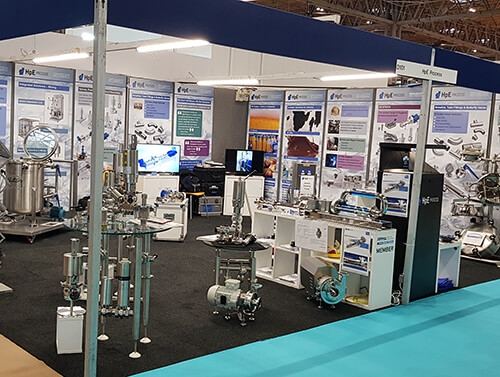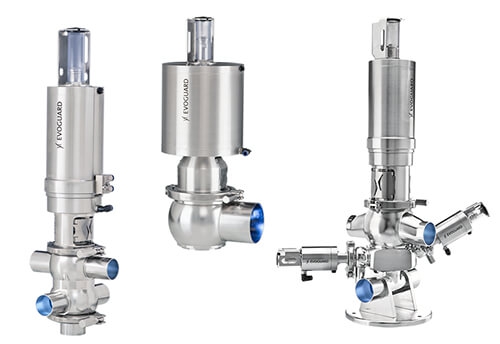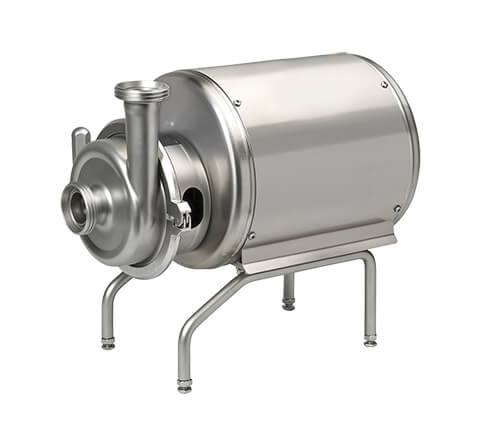- Contact 0870 350 7767
- |
- Advertise
Home > HpE Process Ltd > Valve Technology in Food Production
Valve Technology in Food Production
 News and PR from HpE Process Ltd - Published 17 February 2020
An article written by Roland Sossa for the Drinktec blog highlights how ‘modern valve technology not only helps separate media safely, it also helps save compressed air, water, chemicals, and energy.
News and PR from HpE Process Ltd - Published 17 February 2020
An article written by Roland Sossa for the Drinktec blog highlights how ‘modern valve technology not only helps separate media safely, it also helps save compressed air, water, chemicals, and energy.
At almost every trade fair, the companies showcase their new developments and improvements. In actual fact, valve manufacturers seem to be among the most innovative in the systems and components industry. Technology can almost always be improved: Newly available materials, designs that are more fit-for-purpose thanks to modern simulation techniques, or simply practical experience are all drivers of valve manufacturersÂ’ R&D initiatives.
In addition to safety – which shouldn’t really be a problem with modern valves – resource consumption also attracts a lot of attention. Beverage and food producers, who themselves are under constant cost pressures, expect a reduction in process costs from valve technologies.
Several thousand valves in one single dairy
One approach is the consumption of compressed air. Based on experiences from valve manufacturer Evoguard (Krones Group), around 500 butterfly, 1,000 seat and 1,500 double seat valves are installed in your average large dairy (700 million kg raw materials p.a.). If compressed air consumption could be reduced by just a few percent, this could result in considerable savings.
Compressed air, which is said to be one of the most expensive energies in food factories, is reduced by minimizing the switching of the required volume. This is where the design becomes important. If the gaskets are optimally designed, small drives can be installed. Evoguard claims its new valve technology use just a third of the compressed air volume compared with the non-optimized standard. With double-seat valves, it is possible to achieve a similar effect with double balanced valve discs. Because less volume has to be filled with compressed air within the valve, response times are also shorter.
Valve technology: Increase efficiency, reduce losses
Another way to increase efficiency is to minimize cleaning fluid losses. An NW 65 valve with 2.5 bar line pressure can easily lose almost 2 liters of fluid per second. This loss occurs due to the necessary leakage space in double seat valves, which is cleaned when the valve disc is raised. To prevent the loss of too much cleaning fluid, the response times of the valves must be as short as possible – solutions can be found in their design.
The control heads on valves can also help save resources. If valves equipped in this way are within a valve manifold, compressed air can be introduced via a central line, which reduces losses. From the manifold, it is then only a short distance from the individual compressed air lines to the connection on the valve. This blog post provides only a short description of the current development work being carried out on valve technology.
In addition to safety – which shouldn’t really be a problem with modern valves – resource consumption also attracts a lot of attention. Beverage and food producers, who themselves are under constant cost pressures, expect a reduction in process costs from valve technologies.
Several thousand valves in one single dairy
One approach is the consumption of compressed air. Based on experiences from valve manufacturer Evoguard (Krones Group), around 500 butterfly, 1,000 seat and 1,500 double seat valves are installed in your average large dairy (700 million kg raw materials p.a.). If compressed air consumption could be reduced by just a few percent, this could result in considerable savings.
Compressed air, which is said to be one of the most expensive energies in food factories, is reduced by minimizing the switching of the required volume. This is where the design becomes important. If the gaskets are optimally designed, small drives can be installed. Evoguard claims its new valve technology use just a third of the compressed air volume compared with the non-optimized standard. With double-seat valves, it is possible to achieve a similar effect with double balanced valve discs. Because less volume has to be filled with compressed air within the valve, response times are also shorter.
Valve technology: Increase efficiency, reduce losses
Another way to increase efficiency is to minimize cleaning fluid losses. An NW 65 valve with 2.5 bar line pressure can easily lose almost 2 liters of fluid per second. This loss occurs due to the necessary leakage space in double seat valves, which is cleaned when the valve disc is raised. To prevent the loss of too much cleaning fluid, the response times of the valves must be as short as possible – solutions can be found in their design.
The control heads on valves can also help save resources. If valves equipped in this way are within a valve manifold, compressed air can be introduced via a central line, which reduces losses. From the manifold, it is then only a short distance from the individual compressed air lines to the connection on the valve. This blog post provides only a short description of the current development work being carried out on valve technology.
Other announcements from HpE Process Ltd
-
-
Launching the MX PC Pump at the PPMA Total Show
Launching the MX PC Pump at the PPMA Total Show proves successful for HpE Process
17 Feb 2020
-
Evoguard high-performance technology at our stand D101- PPMA
HpE Process are the Sole UK Distributors for Evoguard and on stand D101 they will be showcasing a variety of Evoguard Pumps and Valves.
17 Feb 2020
-
90% of running costs for a centrifugal pump….
Our product offering allows us the flexibility to look at both short- and long-term solutions.
17 Feb 2020







